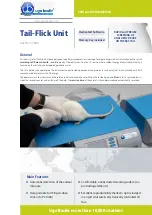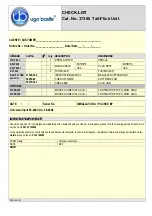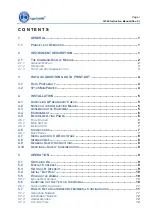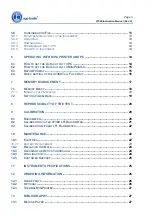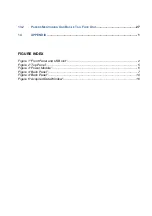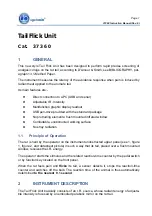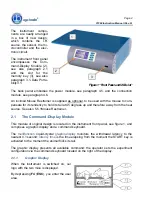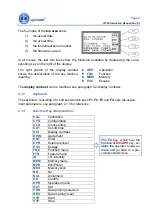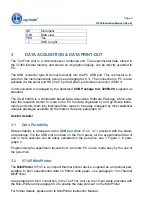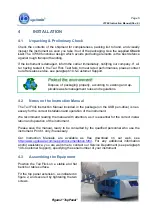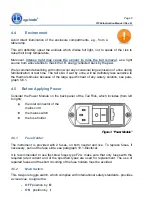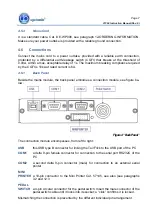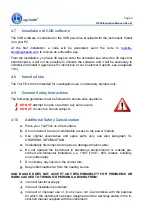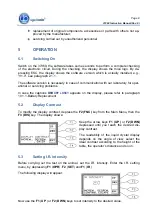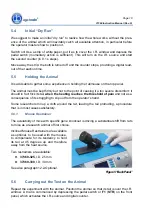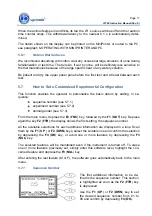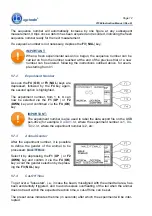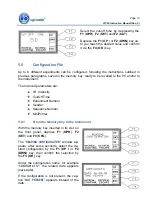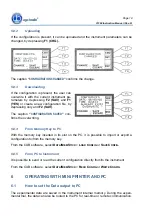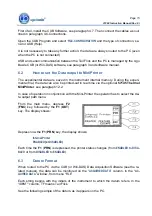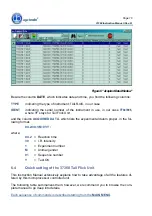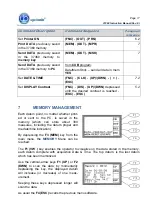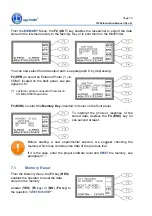
Page 10
37360 Instruction Manual (Rev. 0)
5.4
Initial “Dry Run”
We suggest to make an initial “dry run” to realize how the whole works, without the pres-
ence of the animal which will inevitably catch all available attention, in particular before
the operator masters how to position it.
Switch on! Use a strip of white paper, put it as to cover the I.R. window and depress the
pedal switch (momentary action is sufficient). This will turn on the I.R. source and start
the second counter (in 0.1 s steps).
Move away the strip: the bulb is turned off and the counter stops, providing a digital read-
out of the reaction time.
5.5
Holding the Animal
It is advisable to gather some experience in holding the rat/mouse on the top panel.
The animal must be kept firmly but not to the point of causing it a too severe discomfort: it
should in fact flick its tail
when the heating reaches the threshold of pain
and not as a
consequence of its struggling to slip out from the operator’s hand.
Some researchers roll up a cloth around the rat, leaving the tail protruding, a procedure
that is in most cases satisfactory.
5.5.1 Mouse
Restrainer
The availability of mice with specific gene knockout is driving a substantial shift from rats
to mice as a research animal of first choice.
Inclined Mouse Restrainers are available
as optional, to be used with the mouse,
to compensate for its tendency to hold
its tail at 45 degrees up and therefore
away from the heat source.
Two restrainers are available:
37360-325
, I.D. 25 mm
37360-330
, I.D. 30 mm
See also paragraph 12.2-Optional.
Figure 5 “Back Panel”
5.6
Carrying out the Test on the Animal
Repeat the experiment with the animal. Position the animal so that its tail is over the I.R.
window. A trial is commenced by depressing the pedal switch or
F1
(
STR
) on the front
panel, which activates the I.R. source and digital counter.

